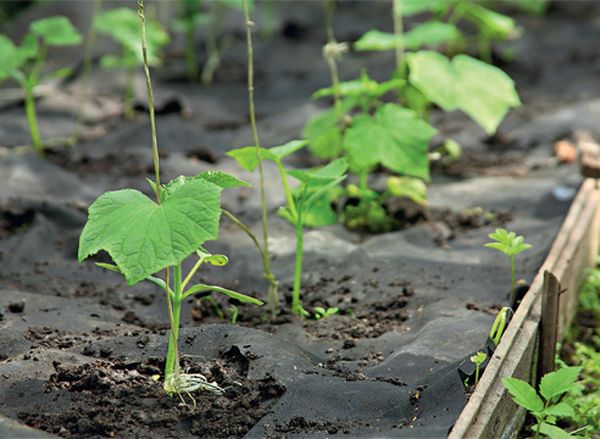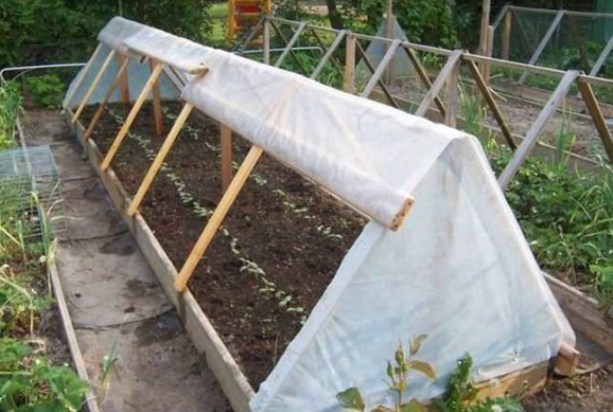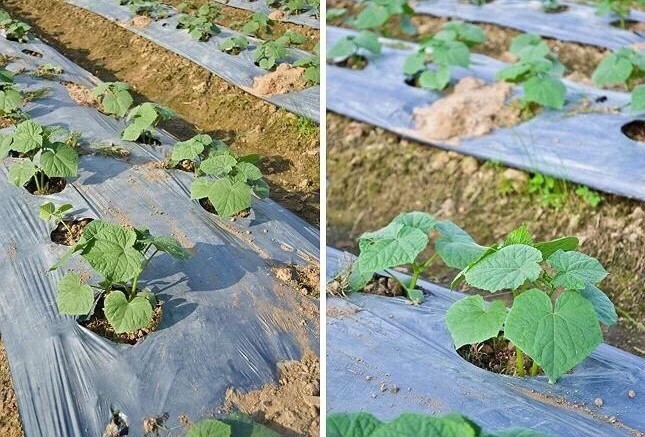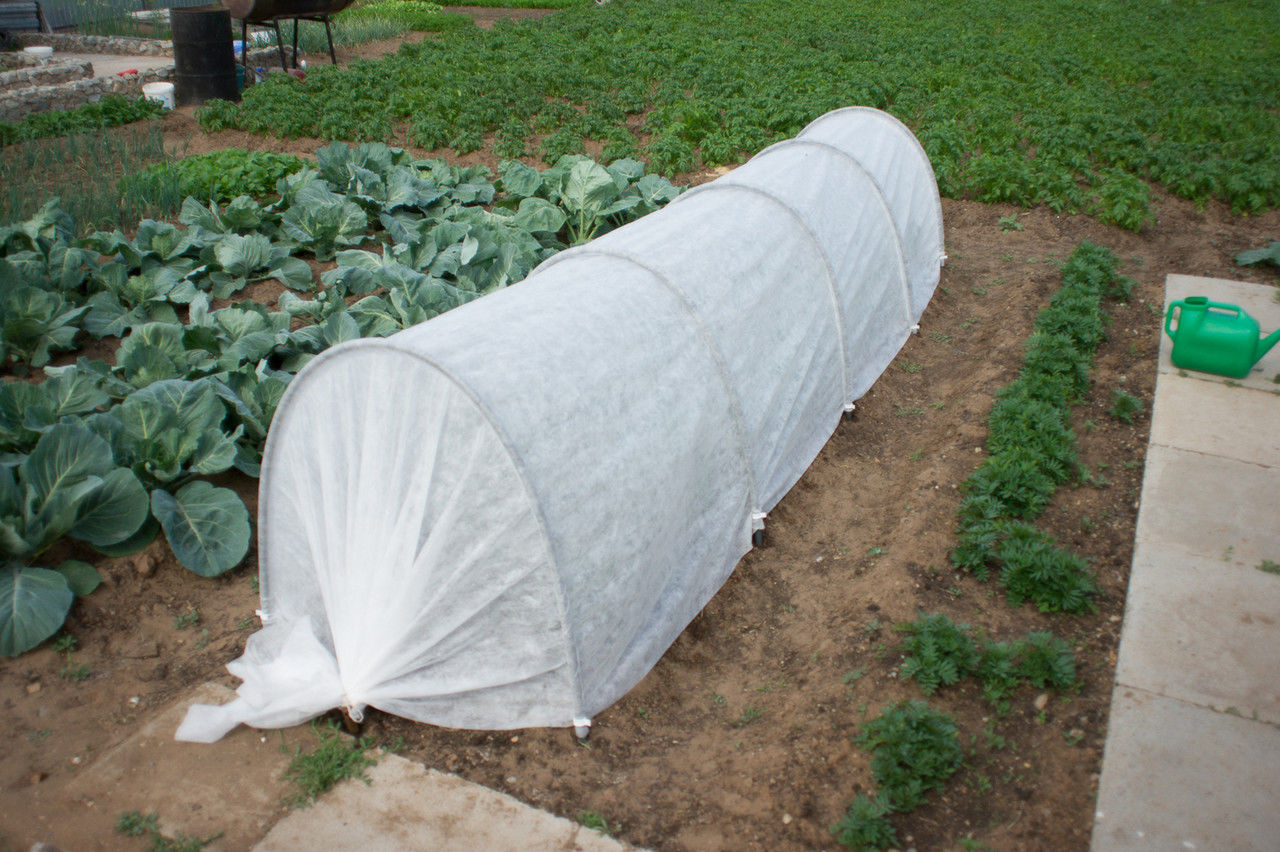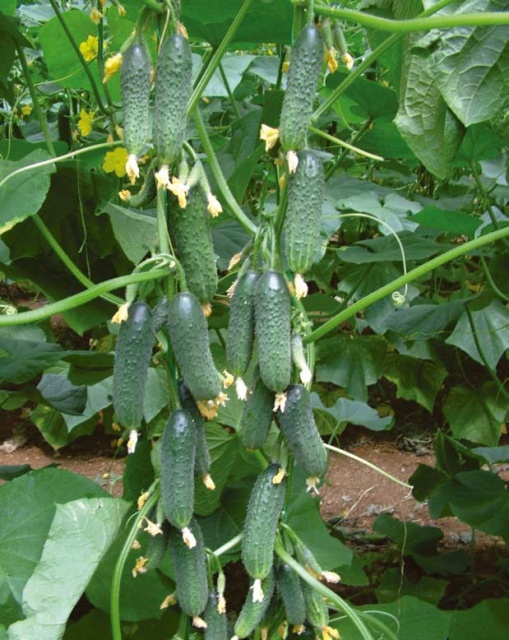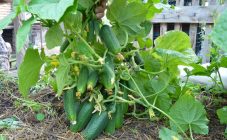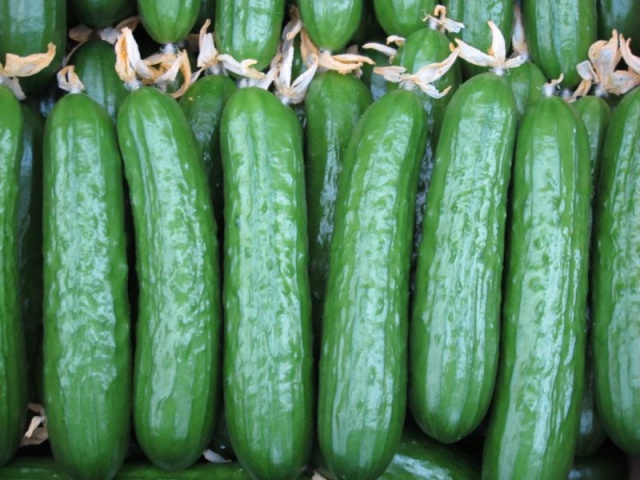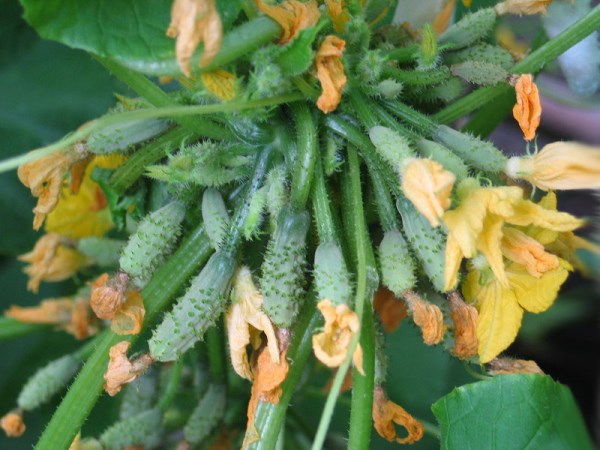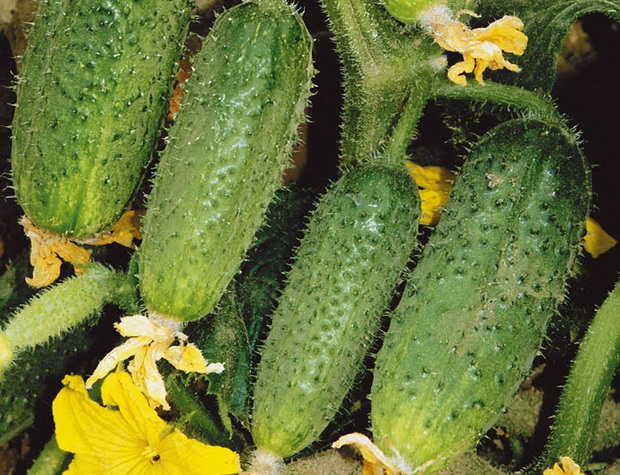Content:
Many summer residents want to grow their first cucumbers as early as possible in order to prepare a fresh vegetable salad. This is quite possible if the plantings are protected in time from gusts of wind, frost, sunlight and pests.
Cucumbers under the covering material help to solve several problems at once. What covering material is best used for cucumbers for the purpose of protection and how to care for the plantings after hiding?
Cucumbers under the covering material
Cucumbers are a picky vegetable crop and will not grow in the shade or in the cold. And under the scorching rays of the sun it will quickly burn out. The shelter can serve as artificial lighting for seedlings in early spring, and also provide the soil with optimal moisture.
Benefits of using a cucumber shelter
- the possibility of planting seedlings or seeds in mid-spring, at cold temperatures outside;
- protection of plantings from strong winds, scorching rays of the sun when landing in open ground under a canopy from a pipe;
- prevention of diseases, pest infestation.
You can purchase material using for greenhouses or planting cucumber seedlings in early spring for the purpose of shelter, you can of the following types:
- polyethylene (film);
- spunbond;
- pvc;
- non-woven agricultural fabric.
It is wise to choose plastic wrap when planting seeds as additional protection. Non-woven fabric:
- at the time of planting cucumbers in open ground, when the probability of frost is still high;
- when plants are blooming;
- in summer, in the heat at an outside temperature of over 30 degrees with the aim of sheltering and accelerating the ripening of plantings.
Planting and growing cucumbers under spunbond: how to plant?
Today, covering spunbond is an excellent alternative to polyethylene, since it is made from environmentally friendly polypropylene, equipped with a rather thin fibrous structure. The effectiveness and features of using spunbond are that the canvas:
- good moisture and air permeability, providing ventilation to the ground;
- retains heat;
- resistant to wear;
- has excellent light transmittance;
- will not lead to injury to the culture;
- will provide the soil with air flows;
- will protect plants from harmful radiation and will accumulate heat;
- does not need to use a plastic frame to cover the vegetable or to urgently remove it for irrigation, since it is equipped with small holes through which you can pour warm water from a bottle.
Manufacturers offer light and dark spunbond by variety. But it is worth understanding when and with what spunbond it is better to cover cucumbers:
- white with the ability to use in open areas with a soil density of up to 30 g per 1 m2, capable of accelerating the formation and preventing overheating of the root system of cucumbers;
- black with a soil density of 50-60 g per 1m² with application during the period of soil mulching;
- black and white with a soil density of 50 g per 1m², as fairly weed resistant;
- white and red with good protection of the vegetable from adverse weather conditions.
How to plant cucumbers in a spunbond greenhouse? Landing in the greenhouse land is carried out directly through the cut holes on the surface of the covering cloth, which are used to cover vertical trellises when arranging the greenhouse. This will prevent the subsequent decay of the root system, and the immature sprouts will not burn, become covered with yellowness from the scorching rays of the sun.
Spunbond is a dense fabric that does not transmit light. It is known that weeds will not be able to grow in the shade and will quickly rot. For cucumbers, this is a benefit, a natural fertilizer.
Of course, spunbond will not be able to protect plants from all the negative phenomena of nature. It is still important to comply with agrotechnical requirements: to plant seedlings in sufficiently warm soil, to select the optimal variety, taking into account the weather and climatic characteristics of the region.
What is the best way to protect cucumbers: with film or material?
Experts do not give an unambiguous answer to this question: the better to protect cucumbers, because both the film and the non-woven fabric have pros and cons. When choosing, it is worth considering the purpose of the application. Many summer residents prefer non-woven products to protect the vegetable from wind, frost, insect pests, and the rays of the scorching sun. Benefits:
- failure to create a greenhouse effect;
- high throughput of moisture and air;
- reliable protection against the onslaught of pests;
- an excellent barrier to the rapid growth of weeds;
- no need to remove material for the purpose of airing and watering seedlings.
Seedlings of cucumbers are mainly grown under black spunbond, so as not to be afraid of overheating of the plants from the scorching rays of the sun in the heat. Although, of course, PVC film also has its advantages:
- creating a greenhouse effect;
- heat accumulation throughput;
- light transmission capacity;
- frost protection;
- high wear resistance.
What is the best way to cover cucumbers: film or material?
Many new summer residents ask: is it better to cover cucumbers: with a film or not with a cloth? If you sow seeds in open ground, then cover the cucumbers with a white non-woven cloth. The fabric will keep weeds from growing because it is dense. Cover the seedlings with your hands from the sun's rays, the onslaught of pests with a reasonably black non-woven product.
Film is a less efficient material and is problematic to use. when watering, it is necessary to remove, and when ventilating the plants, slightly open and control so that the root system does not overheat.
If you do not know how to protect cucumbers from frost in early spring when planting in a greenhouse, experts recommend covering them with white spanbond, stretching them on arcs.
When choosing the optimal shelter for seedlings, the thickness of the material plays a significant role. A thin covering can be used to cover cucumbers after germination, thick - when arranging greenhouses in early spring.
If you need to provide shelter for cucumbers from weeds, then it is reasonable to lay a black film next to the cucumber beds, and select the material directly for sheltering the seedlings, taking into account the climatic conditions.
The purpose of the covering cloth is to simplify the care of seedlings, to increase productivity. When choosing, you need to compare the pros and cons of both options in order to know the best way to cover the cucumbers at low temperatures or, conversely, in the heat.
